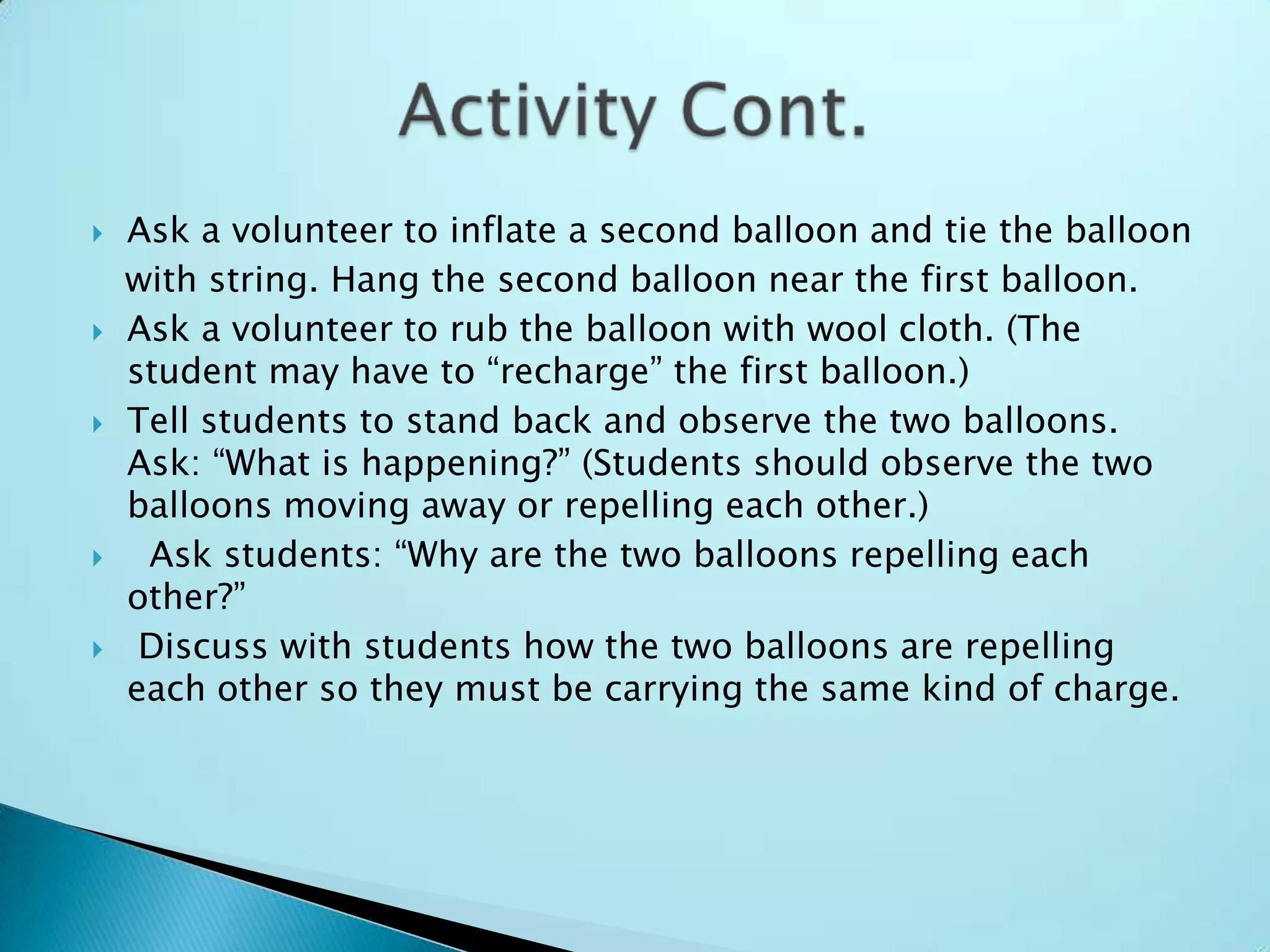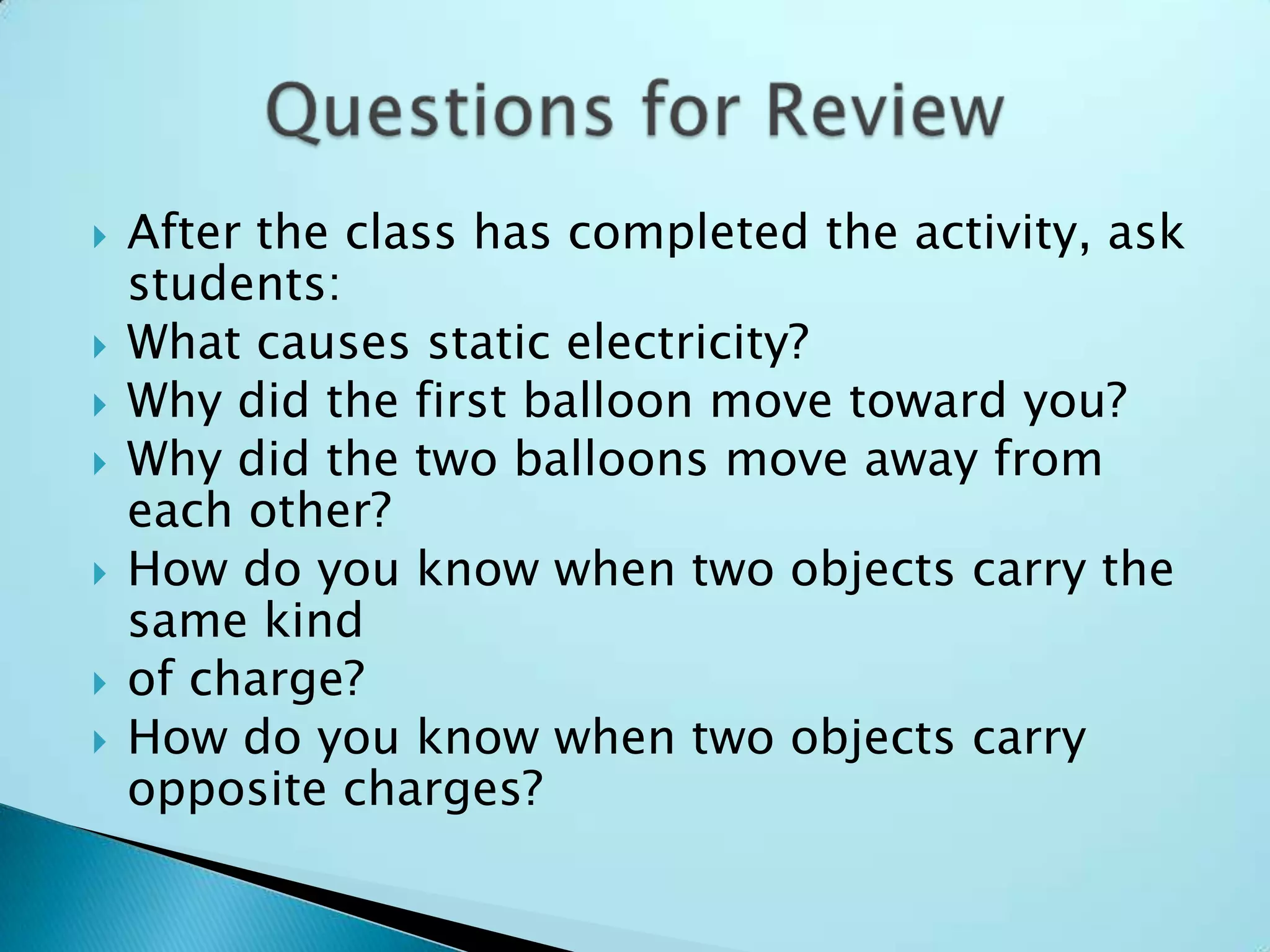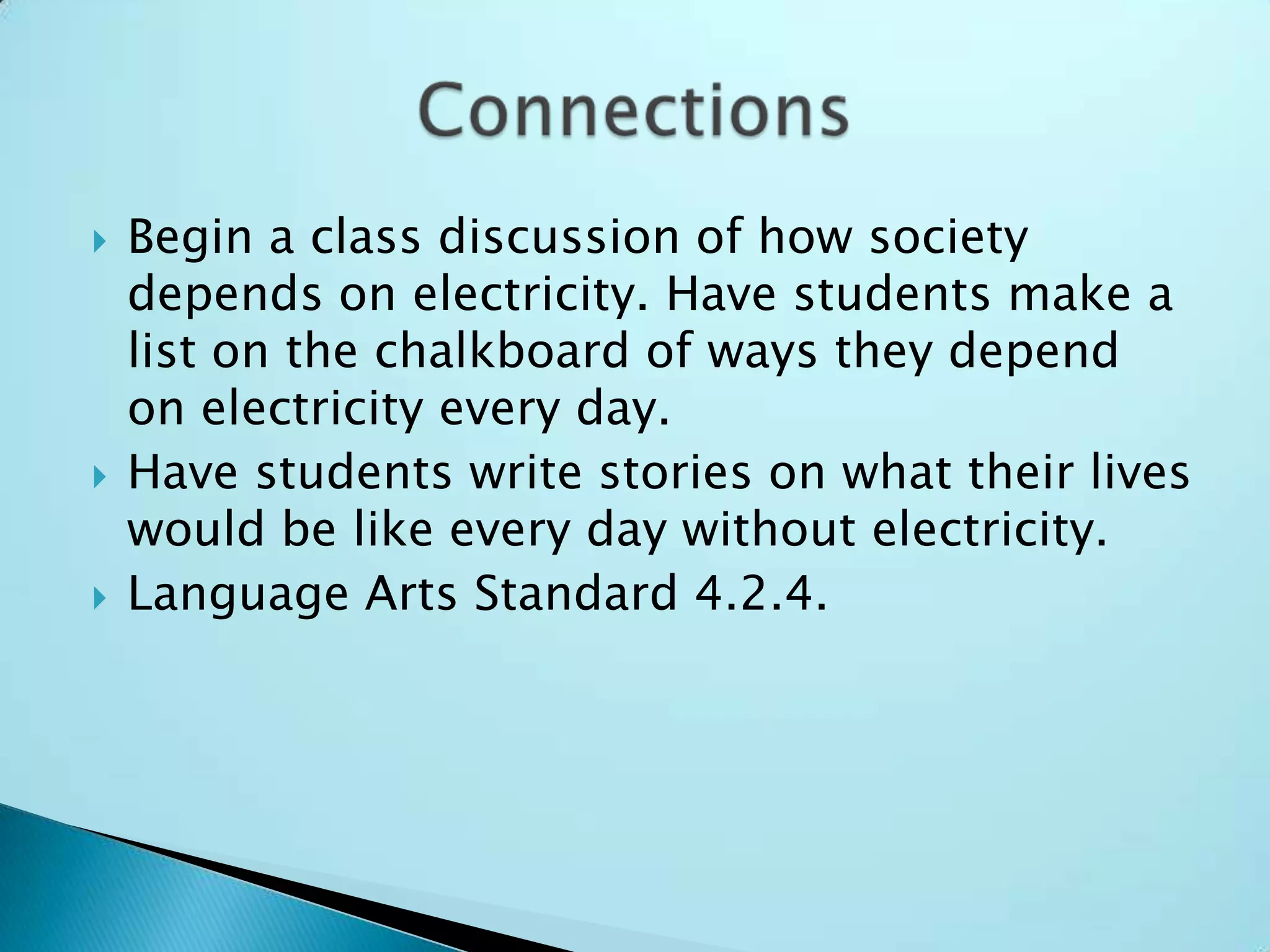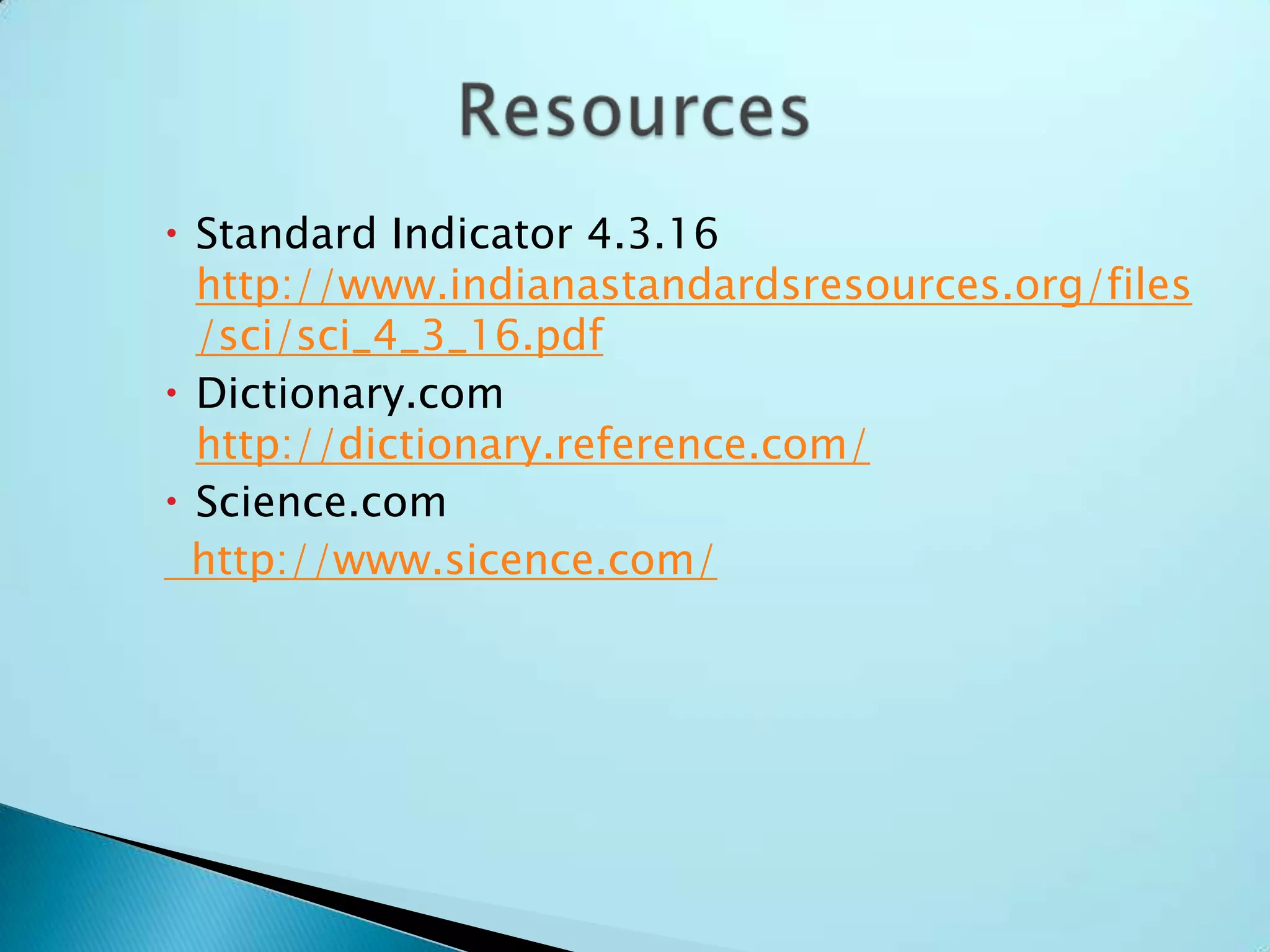Students will demonstrate that charged materials can attract or repel each other without touching. The teacher will have students observe how rubbing a balloon with wool creates a static charge, causing the balloon to move toward a student. Then, when a second balloon is charged and hung near the first, the balloons will repel each other due to having the same charge. This demonstrates that opposite charges attract while like charges repel.
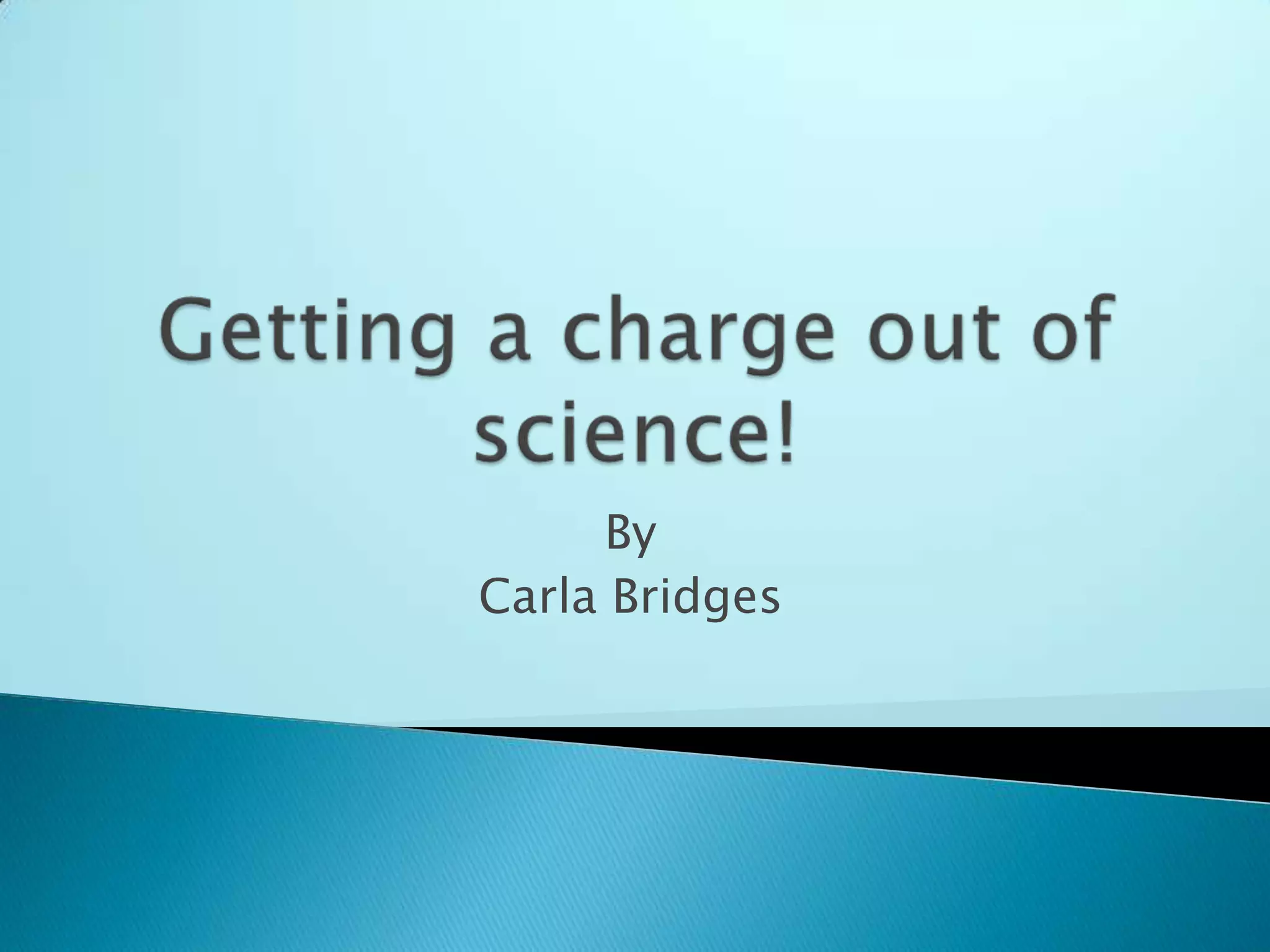
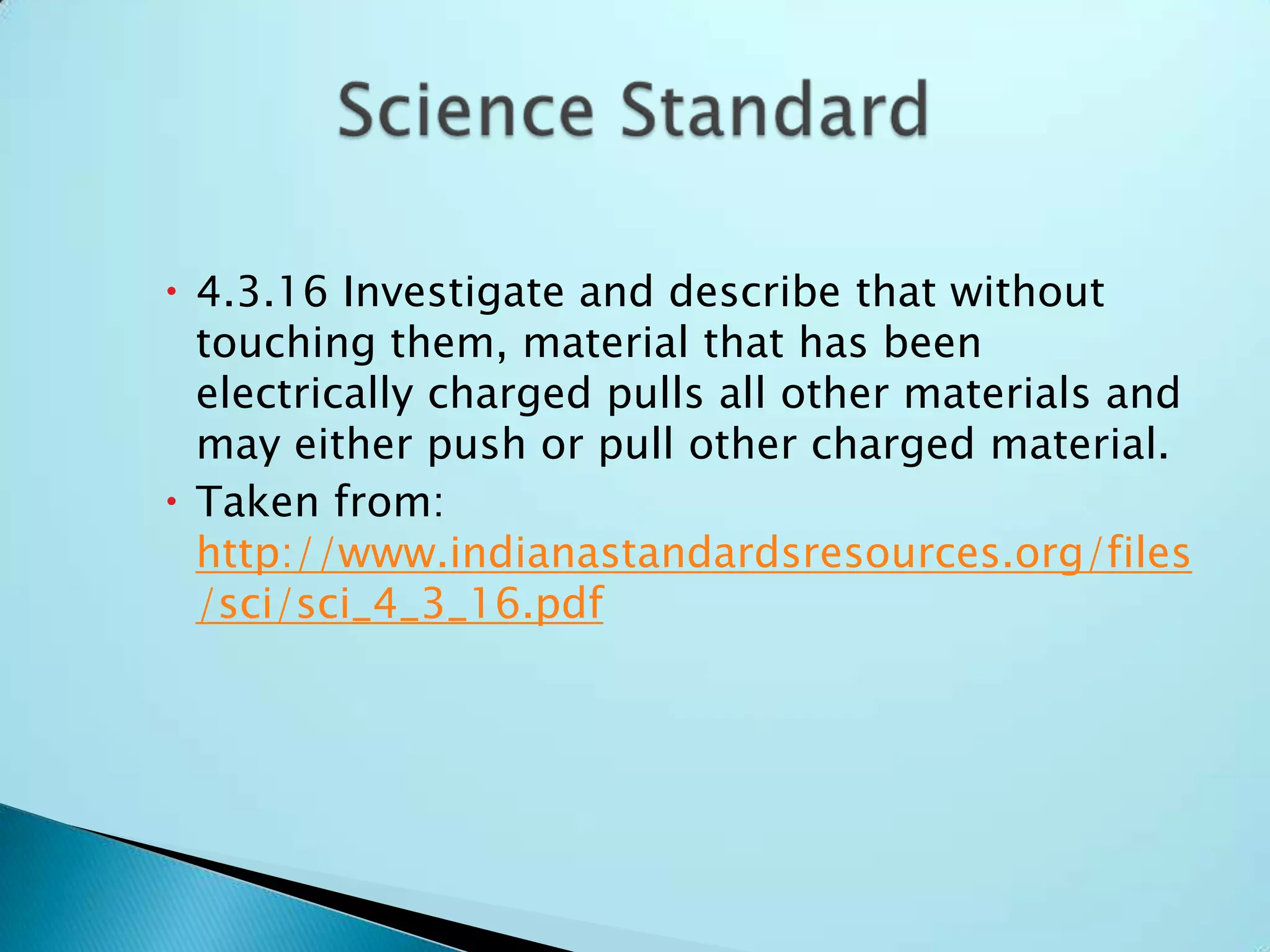
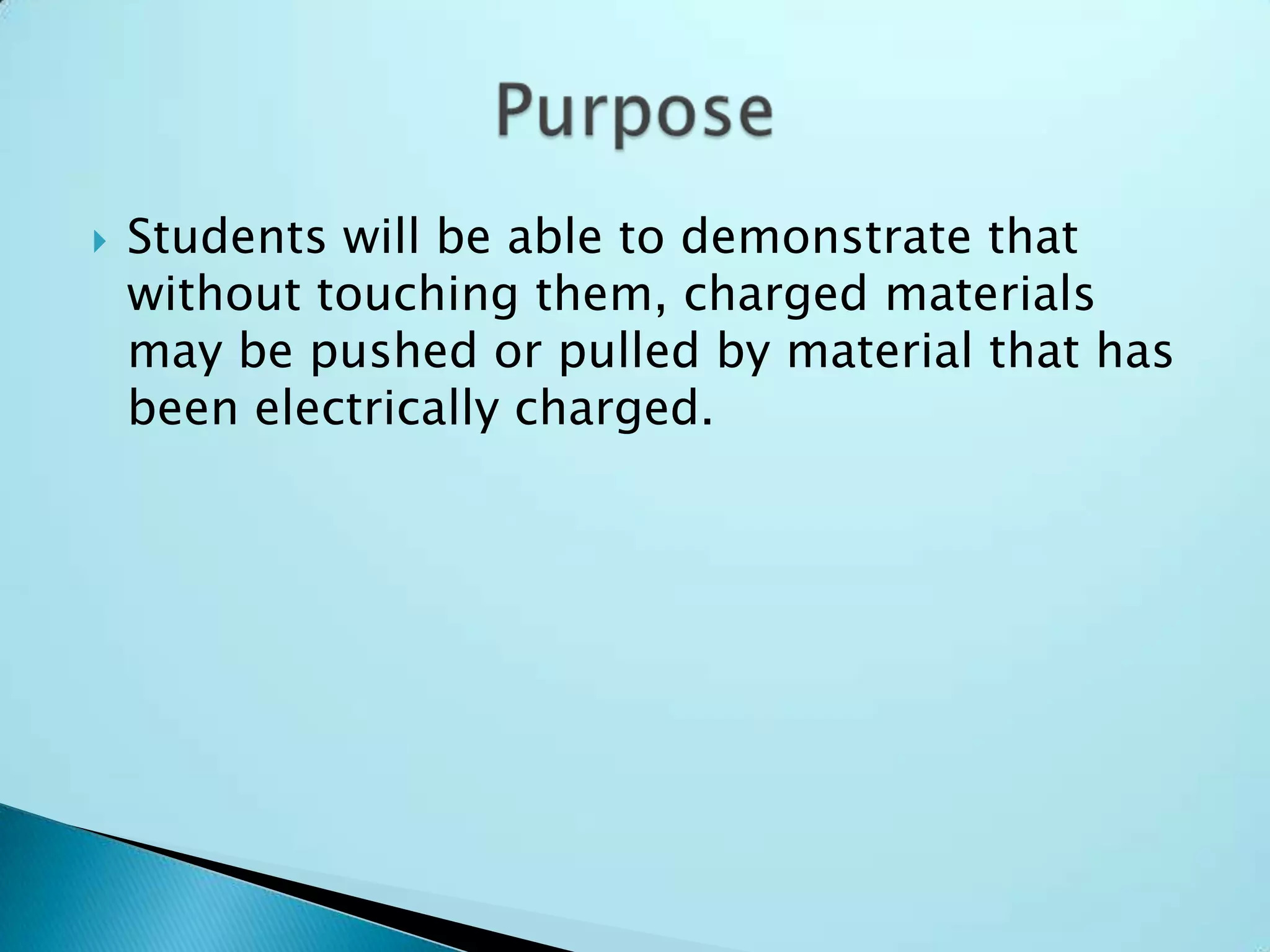
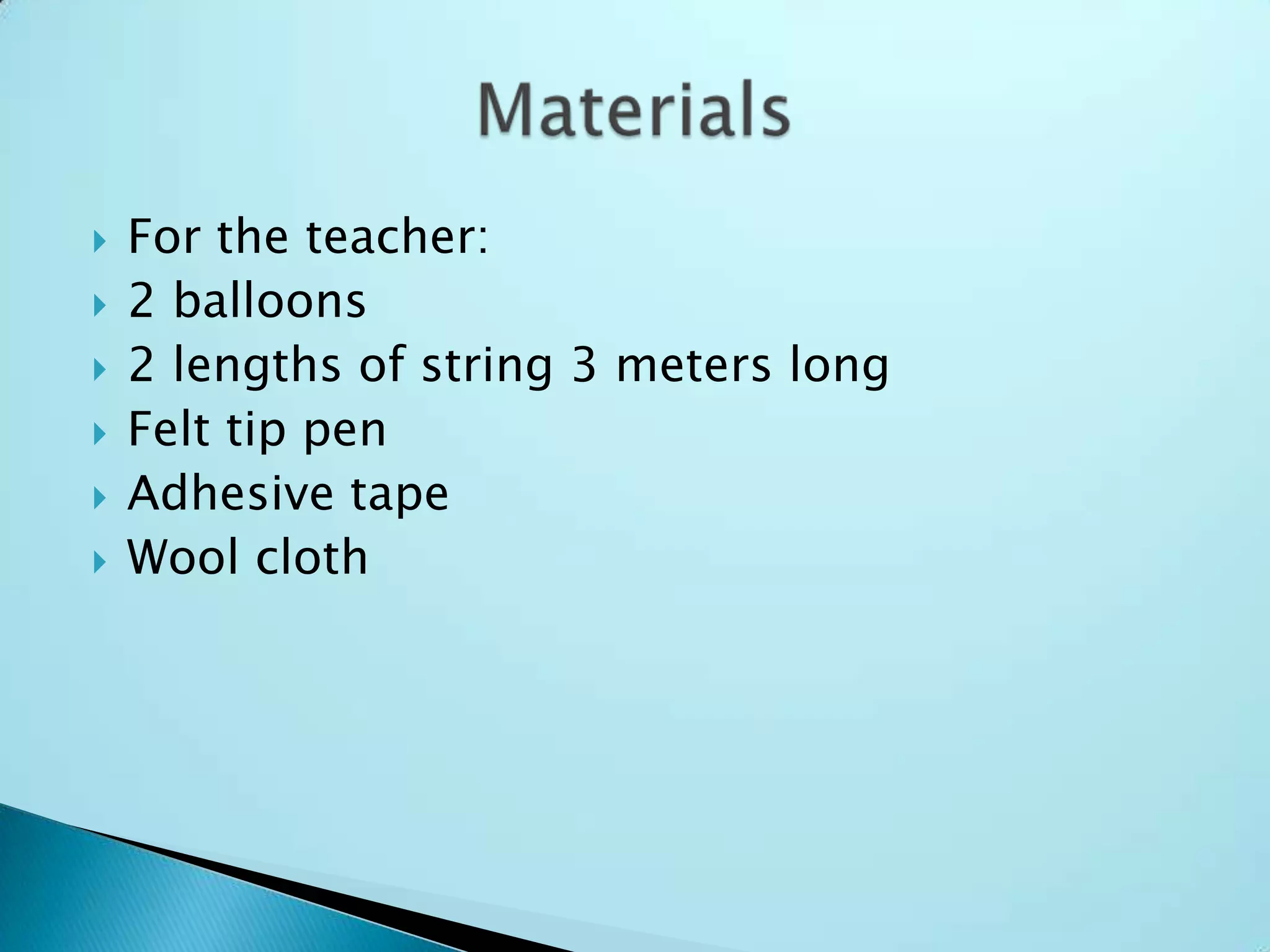
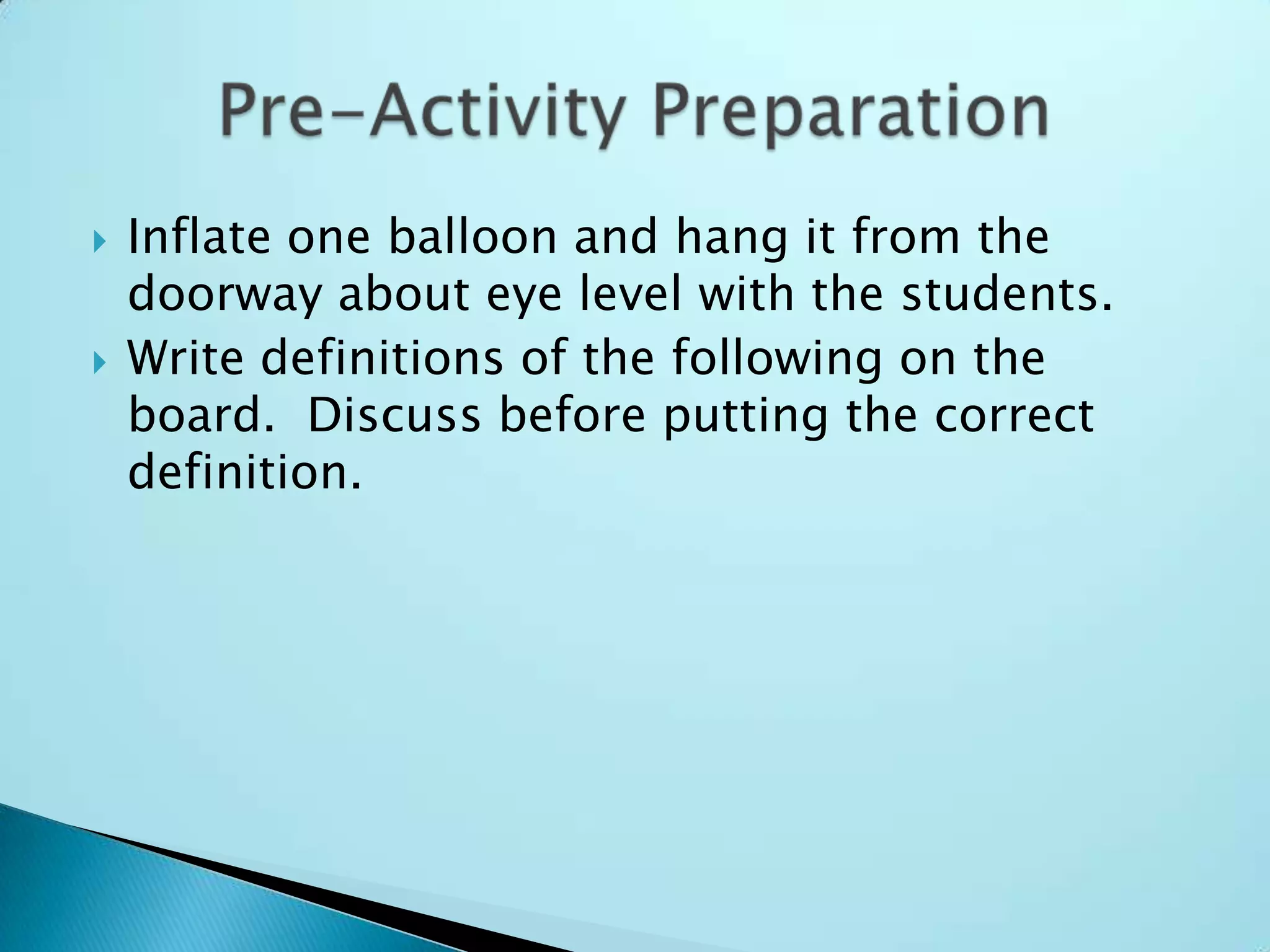
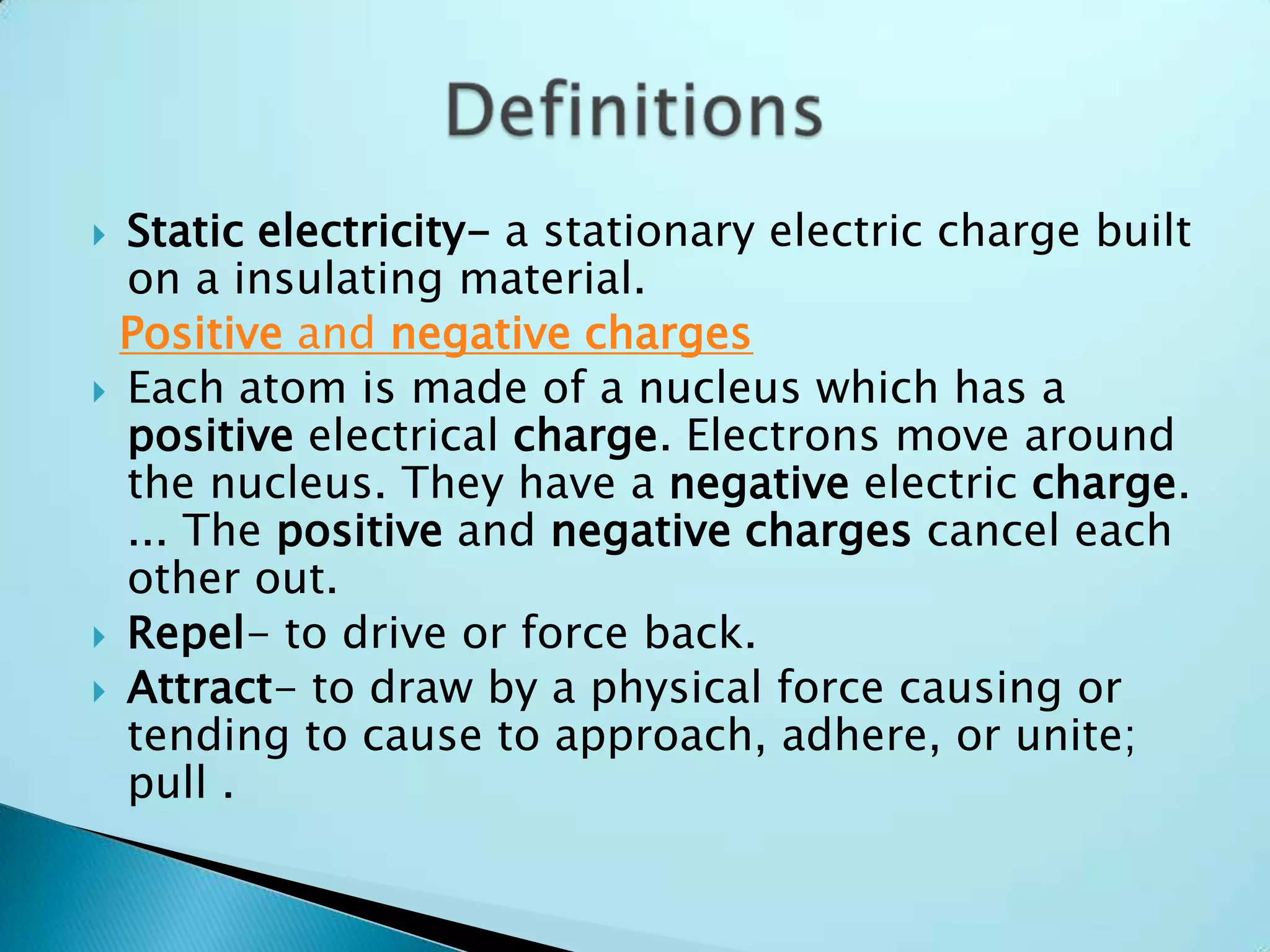
![Ask students: “What is static electricity? Give examples of when you witnessed static electricity.” [Clothes that cling when coming out of the dryer, etc.]Explain to students that almost all things carry a small electric charge and that objects and organisms carry two different kinds of electric charges − positive and negative.Tell students that if two objects are near each other and they have the same kind of charge, they will repel or move away from each other. However, if two objects are near each other and they have different kinds of charges, they will attract or move toward each other.4. Ask students: “With this new information, can you think of a time when you have seen this happen?”Pre-Activity Discussion](https://image.slidesharecdn.com/cuserscoebridgesdocumentsgettingachargeoutofscience-091128215326-phpapp02/75/Getting-A-Charge-Out-Of-Science-7-2048.jpg)
![1. Direct students’ attention toward the balloon you fastened.2. Ask students: “Have you ever witnessed a balloon having static electricity?” Briefly discuss students’ responses.3. Ask a volunteer to rub the face of the balloon with a wool cloth.4. Ask students: “What is happening?” [The balloon should face the student and move toward him/her.]Class Demonstration](https://image.slidesharecdn.com/cuserscoebridgesdocumentsgettingachargeoutofscience-091128215326-phpapp02/75/Getting-A-Charge-Out-Of-Science-8-2048.jpg)
![Tell students that by rubbing wool cloth on the balloon, they are creating static electricity. Remind students that rubbing two objects against each other creates friction. Tell students that the friction causes a static charge. (The friction causes a transfer of electrons, which creates the charges.)Ask students: “Why is the balloon moving toward [insert student’s name]?”Discuss how the student and the balloon are both electrically charged but must have opposite charges, since the balloon is attracted to him/her.Activity Cont.](https://image.slidesharecdn.com/cuserscoebridgesdocumentsgettingachargeoutofscience-091128215326-phpapp02/75/Getting-A-Charge-Out-Of-Science-9-2048.jpg)
